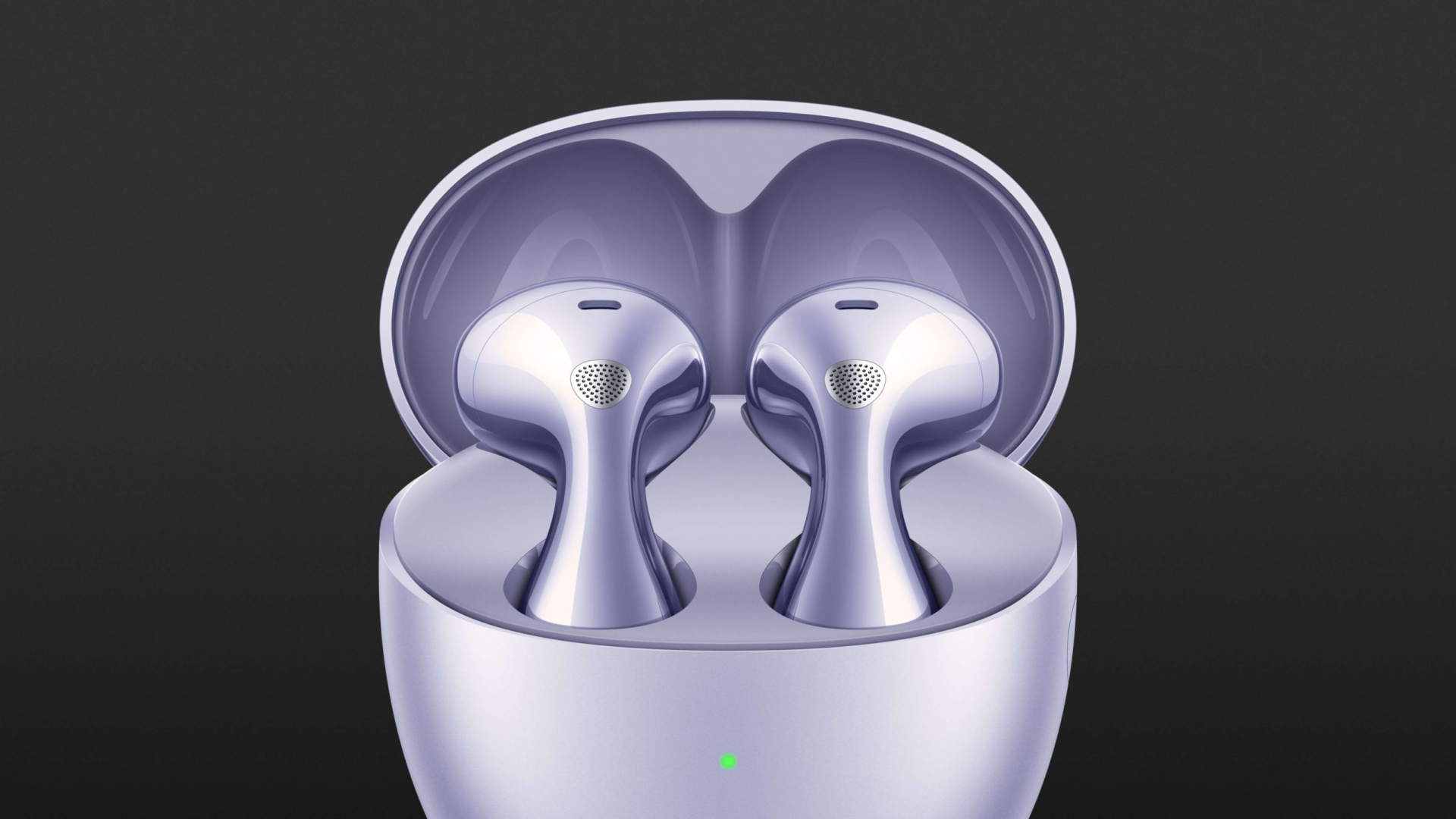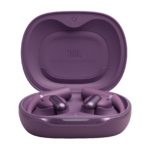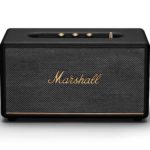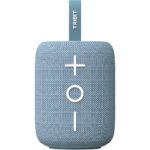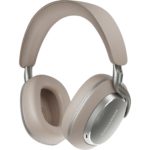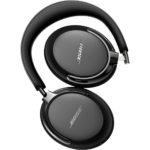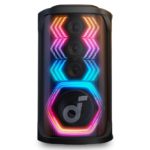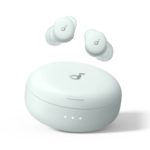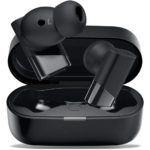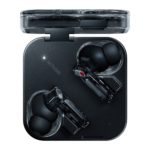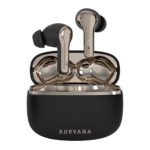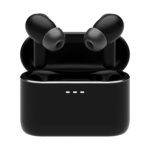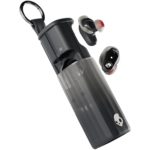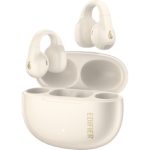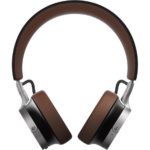The Huawei FreeBuds 6 impress with excellent speech clarity even in wind and noisy environments, fast charging times and a comfortable fit. High-resolution codecs and smart controls round off the package – though ANC performance is weak and bass compensation still has audible flaws.
- High wearing comfort
- Earbuds are IP54 dust and water resistant
- Short charging times
- Case supports wireless Qi charging
- Excellent call clarity
- Optional head gestures during calls
- Multipoint connections
- Support for AAC, LDAC and L2HC 4.0
- Bass range may distort
- No manual power on/off
The Huawei FreeBuds 6 support high-res audio codecs like LDAC and L2HC 4.0, feature noise cancelling, and offer optional head-gesture controls for calls. Thanks to their innovative half-in-ear design, environmental awareness is possible – enhancing safety.
The teardrop shape of the Huawei FreeBuds 6 is undoubtedly eye-catching and fits comfortably in the ear without exerting any pressure. However, these earbuds should not be worn too loose, as this would have a negative effect on the sound quality and noise cancellation. The earbuds come with two pairs of silicone tips to enlarge the surface area of the housing if necessary, which is useful if you have larger ears. These attachments also enable increased grip during sporting activities, and the earbuds are dust and water-resistant in accordance with IP54.
Battery life
In basic mode, the Huawei FreeBuds 6 can achieve a runtime of five and a half hours at high volume when using the AAC codec. If you use noise cancellation at the maximum setting, you can expect four and a half hours of battery life. The handy rounded case can also be used to fully charge the earbuds four times and then charge them to 70 per cent before an external power source is required. The earbuds can be fully charged after just 35 minutes, and a five-minute quick charge provides 45 minutes of battery life (without ANC). The case’s battery reserve can also be restored after 40 minutes using the included USB-C to USB-A charging cable. Wireless charging via Qi is also possible.
Bluetooth specs
In addition to Bluetooth version 5.2, the Huawei FreeBuds 6 support multipoint connections with two devices simultaneously. However, we noticed that there are currently unresolved issues with Apple devices that still need work. Seamless switching between a MacBook Air and an iPad or iPhone did not work, but this worked perfectly with an Android device, for example, a Nothing Phone.
SBC, AAC, LDAC and L2HC 4.0 are available as audio codes. In addition, there is a low-latency mode for playing computer and mobile games or for watching films and boxsets.
Operation
The touch area of the Huawei FreeBuds 6 is centrally located, making the earbuds easy to insert and remove without causing any mistakes in operation, which is a well-realised solution. The standard features include playback start and stop, answering and ending phone calls, skipping to the next track, volume control and switching between basic and ANC modes. In addition, you can add a voice assistant and a skip back function via the app.
Head motion control can also be activated during phone calls, making it possible to accept calls with a nod and shake your head to reject, and this was reliably recognised by the device and extremely practical.
The low-latency mode cannot be controlled directly on the earbuds. There was also no manual on/off switch, which means that the case was always required for operation. However, single-sided use was supported, and wear detection can be enabled if desired.
The Huawei FreeBuds 6 app (for iOS and Android via AppGallery or as an APK file from the Huawei homepage) offers three ANC modes to choose from: an adaptive mode that automatically adjusts to the environment, and two static modes for either a quieter or louder environment.
The sound control includes five pre-sets – ‘Bass Boost’, ‘Treble Boost’, ‘Voice’, “Symphony”, and ‘Hi-Fi Live’ – plus a 10-band EQ for custom adjustments, where you can save up to three pre-sets. It is possible to activate adaptive volume adjustment.
Furthermore, you can enable or disable low-latency mode or acoustic feedback from the charging case and perform firmware updates. With Android devices, there is also the option to select LDAC as the preferred codec.
Voice clarity during phone calls
According to the manufacturer, the sophisticated microphone technology in the Huawei FreeBuds 6 uses a bone conduction microphone and multi-channel noise cancellation algorithms, and these worked excellently. All wind and ambient noise was blocked out, even in strong gusts or with noisy backgrounds. This meant that the person on the other end of the call could only hear your voice, and this was perfectly clear and fluid even with the intensive filtering enabled. Very impressive!
Noise cancellation (ANC)
You should not expect too much from the noise cancellation of the Huawei FreeBuds 6. The manufacturer refers to ‘open-fit’ noise cancelling, which is primarily intended to reduce low frequencies, and this was indeed the case with this device. In both adaptive and static ANC modes, there was a slight reduction in the lower frequency spectrum, but this was not comparable to closed in-ear systems.
Keyboard noises were attenuated, while voices were only minimally dampened. Overall, the noise cancellation was low-noise, but it clearly affected the sound, as the bass range was amplified in ANC mode.
How the Huawei FreeBuds 6 sound
The dual design of the Huawei FreeBuds 6 combines a dynamic 11mm driver with a flat diaphragm driver. In conjunction with the company’s proprietary Bass Turbo technology, this is intended to counteract the loss of bass frequencies inherent in earbud systems. However, in practice, this only worked to a limited extent.
In basic mode, the bass response extended quite far down but did not convey a full sound, instead coming across as tighter and very defined, which harmonised well when listening to many rock and pop songs. However, with club-oriented productions, the lower frequency range could become distorted, and this was distinctly intensified when the bass boost was activated.
It was strange that the more fun-oriented ANC mode distorted significantly less often despite the richer bass response, although this altered when amplification was applied. In this respect, there is still room for improvement on the part of the manufacturer when it comes to low-frequency reproduction.
The midrange was restrained but pleasantly spacious, tidy and extremely clean. While the basic sound managed to bring out details effortlessly, the voice reproduction could do with a little more assertiveness, especially for use on the go. Vocals had a certain presence and were slightly in the foreground, but they could have done with a little more body. However, in ANC mode, the voice reproduction was clearly more powerful.
The treble reproduction was present and lively, and this had a positive effect up to a medium playback volume and provided the desired accents. Having said that, at higher volume levels, the upper registers might be perceived as sharp and tend to sound a little harsh. Sibilance also became noticeably more pronounced as the volume increased. However, a slight reduction in the high frequencies with the EQ would remedy this.
Conclusion
Thanks to a bone conduction microphone, the Huawei FreeBuds 6 offer excellent voice clarity during phone calls in noisy or windy environments. Other plus points include short charging times, high-resolution codecs, optional head motion control for phone calls and the high wearing comfort of the half-in-ear design. However, the noise cancellation did not meet our heightened expectations and for the most part, only weakened low-frequency external noise slightly. In addition, the bass compensation needs improvement at this stage, as it could lead to distortion.
Technical specifications
- Ear couplingIn-ear
- TypeHalf-open
- Transducer principleDynamic & Planar Magnetic
- Weight without cable5 g each, case 40 g
What's in the box
- 2 pairs of silicone sleeves
- USB-C to USB-A charging cable
- Charging case
Special features
- Available in black, white and purple
- BT codecs: SBC, AAC, L2HC4.0, LDAC













